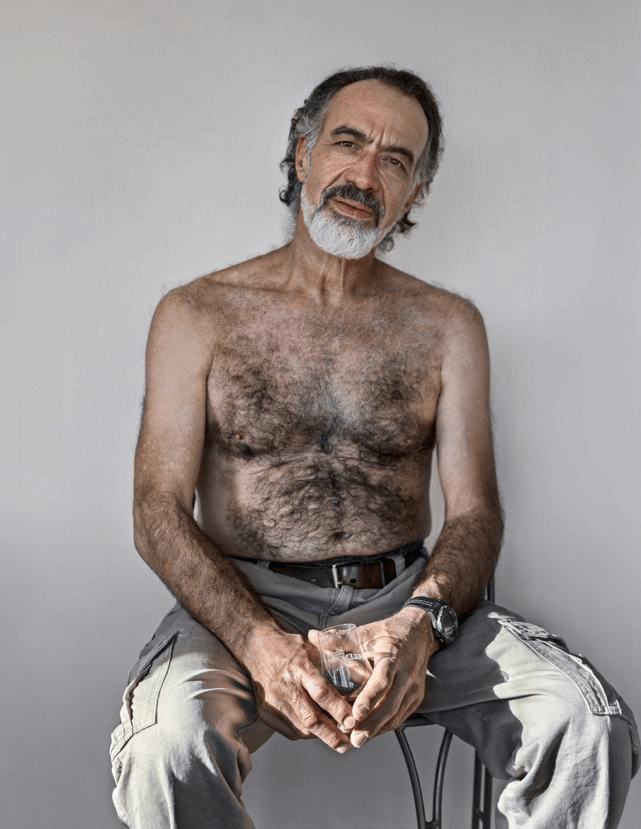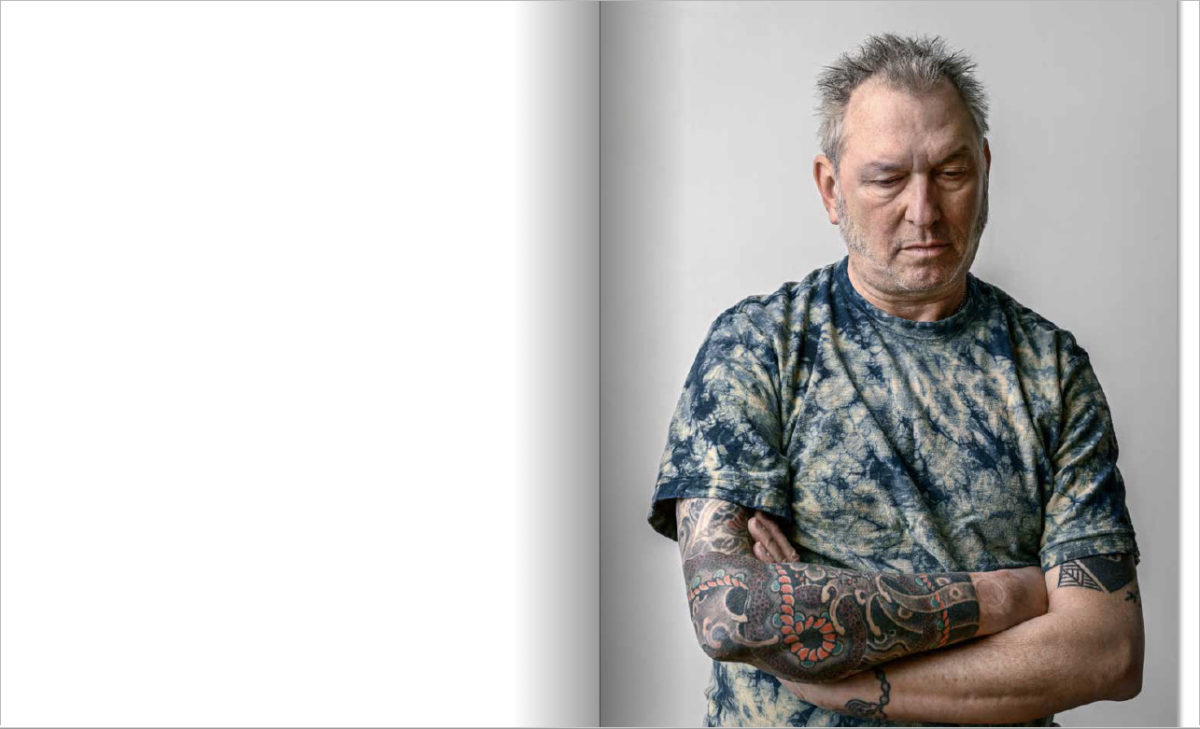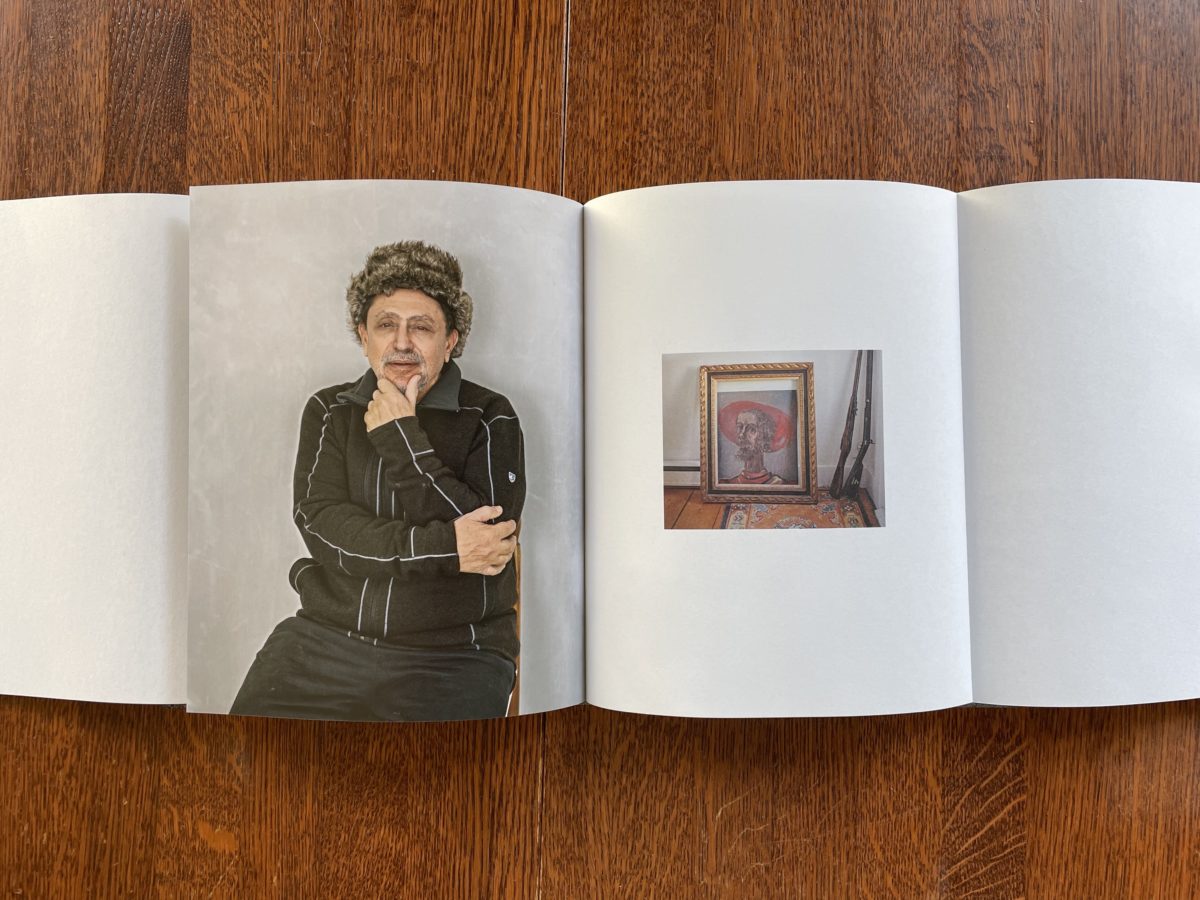blog
Book Review: The Boys by Rick Schatzberg

From ‘The Boys’ © Rick Schatzberg
When two of his oldest friends died unexpectedly, Rick Schatzberg (born in 1954) turned to photography to cope with his grief. He spent the next year and a half photographing his remaining group of a dozen men who have been close since early childhood. Now in their 67th year, “The Boys,” as they call themselves, grew up together in the 1950s in post-war Long Island, New York.
Conceived from the outset as a photo book, Schatzberg collected old snapshots from the 1970s that tell the story of their shared history and used them to introduce each individual. He paired the vintage photos with contemporary large-format portraits which connect each boy to the man they are today. Interspersed amongst the images are twelve chapters of moving, poetic text in which Schatzberg addresses friendship, aging, loss, suburbia, and memory as the group arrives at the brink of old age. In the final stages of preparation for the book, two more of his friends died. The group had been reduced by two.
In an interview with Float Magazine this year, Schatzberg said this about how the book came to be, and why he approached the subject matter in the way he chose:
“In the spring of 2017, I was in Berlin with my wife Marilyn when I got a message from an old friend telling me Jon had died of a drug overdose. Only 9 months earlier, another friend from our group, Eddie, had died suddenly of a heart attack. On the plane ride home, all I could think about was Jon and Eddie. I saw them vividly, with what seemed like unusual clarity, though I hadn’t really been that close with either of them in many years. My re-estimation of their lives, suddenly with far less judgement than before, surprised me, and also got me thinking about who I should be paying closer attention to. Somewhere over the Atlantic Ocean I got the idea that I should be photographing our remaining group of a dozen childhood friends, many of whom I was still very close to. By the time my plane landed in New York, undertaking a formal photo project about these men and their longstanding friendships seemed the most meaningful project I could imagine.
After Jon’s funeral I mentioned this idea to my friends, and they were all game to participate. As my thinking about the project evolved, I understood that what I really wanted to do went beyond honoring our lost friends’ memories or creating a nostalgic keepsake. I wanted to investigate time and its manner of passing, through the lens of friendship. I wanted to make work that was intimate, remorseless, and loving – with the occasional joke. I wanted to make a book about origins and endings.”
The Boys beautifully and frankly brings me into the intimacy and vulnerability of male friends, and of enduring boyhood friendships which, if we’re lucky, translate into lifelong friendships which gain a patina of sorts. I grew up with a younger sister, and often I don’t understand the relationship other men had with their brothers. They can beat each other up, pee in their brother’s shoes just to get even, all in the name of ‘brotherly love’, and at the same time they often will defend each other to the death against outsiders. This dichotomy is a mystery to me, yet I completely understand the sentiment of “if you mess with one of us, you mess with all of us.” I grew up in small-town suburbia, in a close knit group of guys who attended small schools and everyone knew each other. We are brothers.
I would be remiss if I didn’t speak to the attention given to how this book was conceived and executed as a photo book. The Boys is designed by the award-winning Dutch photo book designer Sybren Kuiper. The book includes a dozen gatefolds each opening to reveal a portrait along with close-ups and details of one of the 12 men. The afterword by Rick Moody is produced as a separate 12-page pamphlet which sits in a “pocket” on the book’s inside back cover. This is one of the best books I’ve reviewed in terms of consideration to how gatefolds and inner revealed pages work with the overarching flows and pacing of the book. Something akin to peeling back the layers of time and emotional levels of intimacy speak to the reader in artfully crafted pages. My one criticism would be the unfortunate placement of a photograph across the gutter – two men in a friendly tussle, or demonstration of ‘brotherly love’, are buried in the fold of the book. Their faces are divided and reduced by the bend of the pages into the center of the binding. Not all photos work across a two page spread, and the designer or publisher should’ve caught this one.
But most importantly, this book is so personal in nature and I’m reminded of the concept that one’s work can reflect how we see ourselves even if the artist themself isn’t captured in the image. The way Schatzberg photographs his friends in portraits as middle aged men, paired with the photographic ephemera of their youth, speaks to the way he might feel about his own existence, his own past, and present as seen with the wisdom and hindsight of decades gone by. At some point in our lives, many of us stare at the unknown years yet to come; and reflect upon the nature of our existence, the meaningfulness of our past, and the value of such things often taken for granted. Like friendships from our childhood. Without rosebud, Citizen Kane wouldn’t be half as relevant, nostalgic or melancholy – that bitter-sweet sadness we welcome and fear all at the same time.
In his closing essay, On Rick Schatzberg’s The Boys, noted novelist Rick Moody writes about the contemporary portraits of the men: ” … photos of creaky, decaying, older white men struggling for dignity are perhaps the hardest photos to look at now. There is no audience, in the strictest sense, for these images, if audience is determined by fashion or by the merchandising demographics of the present. But that’s exactly what makes this book terribly affecting. The relationship of Schatzberg’s gaze to his subjects is never less than loving, never less than intimate, but it is also, fair to say, remorseless. In this, I think, the book tells us a lot about how one thinks about one’s own past.”

From ‘The Boys’ © Rick Schatzberg

From ‘The Boys’ © Rick Schatzberg

From ‘The Boys’ © Rick Schatzberg

Z, Zeb, Robert, Pike – From ‘The Boys’ © Rick Schatzberg

Fred, Ferd, Bird – From ‘The Boys’ © Rick Schatzberg

Ken, Kenny, Kid – From ‘The Boys’ © Rick Schatzberg

Mitchell, Mitch, Butch – From ‘The Boys’ © Rick Schatzberg

David – From ‘The Boys’ © Rick Schatzberg

Bob, Bobby, Big Bobby – From ‘The Boys’ © Rick Schatzberg

Gatefold progression for Bruce, Groom – From ‘The Boys’ © Rick Schatzberg

Gatefold progression for Bruce, Groom – From ‘The Boys’ © Rick Schatzberg

Gatefold progression for Bruce, Groom – From ‘The Boys’ © Rick Schatzberg

From ‘The Boys’ © Rick Schatzberg

The Boys
by Rick Schatzberg
Essay by Rick Moody
Hardcover, 7-1/2 x 9-3/4 inches, 144 pages
Rick Schatzberg is a photographer living and making work in Brooklyn, New York and Norfolk, Connecticut. He received his MFA in Photography from the University of Hartford in 2018. Schatzberg holds a degree from Columbia University in Anthropology (1978), played French horn with Cecil Taylor’s jazz ensemble in 1970s, and was a business executive and entrepreneur in the New York metropolitan area for many years. In 2015 he completed a one-year certificate program at the International Center of Photography. In the same year, his first monograph, Twenty Two North (self-published), was awarded first prize at Australia’s Ballarat Foto International Biennale. His second monograph, The Boys, was published in 2020 by powerHouse Books.
Location: Online Type: Book Review
Events by Location
Post Categories
Tags
- Abstract
- Alternative process
- Architecture
- Artist Talk
- artistic residency
- Biennial
- Black and White
- Book Fair
- Car culture
- Charity
- Childhood
- Children
- Cities
- Collaboration
- Community
- Cyanotype
- Documentary
- Environment
- Event
- Exhibition
- Faith
- Family
- Fashion
- Festival
- Film Review
- Food
- Friendship
- FStop20th
- Gender
- Gun Culture
- Habitat
- Hom
- home
- journal
- Landscapes
- Lecture
- Love
- Masculinity
- Mental Health
- Migration
- Museums
- Music
- Nature
- Night
- nuclear
- p
- photographic residency
- Photomontage
- Plants
- Podcast
- Portraits
- Prairies
- Religion
- River
- Still Life
- Street Photography
- Tourism
- UFO
- Water
- Zine

Leave a Reply